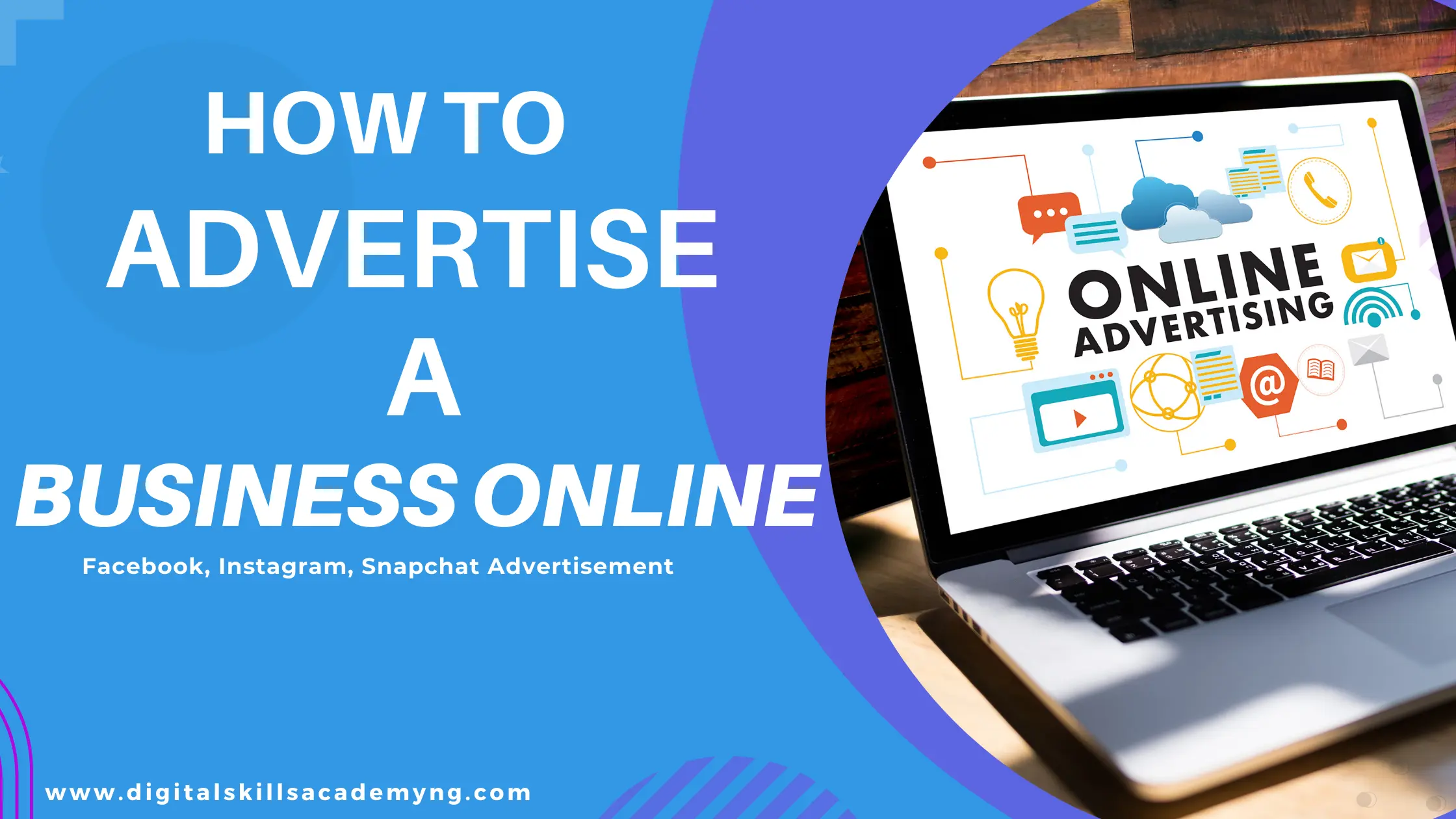How to advertise a business online.
Advertising is a form of communication that aims to promote or sell a product, service, or idea. It typically involves paying for space or time in various media channels to reach and influence a target audience. The primary goal of advertising is to create awareness, generate interest, and ultimately persuade individuals to take a desired action, such as making a purchase, visiting a website, or supporting a cause.
Advertising can take many forms, including:
- Print Advertising: This includes advertisements in newspapers, magazines, brochures, flyers, and posters.
- Broadcast Advertising: This encompasses television and radio commercials, as well as advertisements in podcasts.
- Digital Advertising: With the rise of the internet, digital advertising has become increasingly prevalent. This includes display ads, search engine advertising (such as Google Ads), social media advertising (such as Facebook Ads), email marketing, and influencer marketing.
- Outdoor Advertising: This includes billboards, transit ads (on buses, trains, taxis, etc.), and signage.
- Direct Mail Advertising: This involves sending physical promotional materials, such as postcards, flyers, or catalogs, directly to individuals’ mailboxes.
What is Advertising
Table of Contents
Advertising often employs various techniques and strategies to capture attention, evoke emotions, and persuade consumers. These may include catchy slogans, appealing visuals, celebrity endorsements, storytelling, humor, and appeals to logic or emotion.
Effective advertising campaigns are carefully planned and executed to resonate with the target audience and achieve specific marketing objectives, such as increasing sales, brand awareness, or brand loyalty.
In Essence;
Advertising means promoting products, services, or brands to a target audience through various channels. An advert aims to inform, persuade, and remind potential customers about the value of the offering, driving sales and enhancing brand awareness.
You can learn about how online marketing works.
Step-by-Step Guide on How to Advertise a Business Online Using Different Social Media Channels
Facebook Advertising
Step 1: Create a Facebook Business Page
Set up a business page with complete details, including a profile picture, cover photo, and business information.
Step 2: Access Facebook Ads Manager
Go to Facebook Ads Manager (here)
Step 3: Define Your Campaign Objective
Choose your campaign objective (e.g., brand awareness, traffic, conversions).
Step 4: Set Up Ad Account
Enter your account information, including country, currency, and time zone.
Step 5: Target Your Audience
Define your target audience by demographics, interests, and behaviors.
Step 6: Choose Ad Placements
Decide where your ads will appear (e.g., Facebook News Feed, Instagram, and Audience Network).
Step 7: Set Budget and Schedule
Determine your budget (daily or lifetime) and set the schedule for your ad campaign.
Step 8: Create Your Ad
Choose the ad format (e.g., image, video, and carousel), write compelling ad copy, and upload your creative assets.
Step 9: Review and Launch
Review all settings and launch your campaign.
Instagram Advertising
Step 1: Link Instagram to Facebook Page
Connect your Instagram account to your Facebook Business Page.
Step 2: Access Facebook Ads Manager
Use the same Ads Manager as Facebook to create and manage Instagram ads.
Step 3: Define Campaign Objective
Select an objective suitable for Instagram (e.g., brand awareness, engagement, conversions).
Step 4: Target Your Audience
Use the same targeting options as Facebook to reach your desired audience on Instagram.
Step 5: Choose Ad Placements
Ensure Instagram is selected as an ad placement.
Step 6: Set Budget and Schedule
Define your budget and the duration for which your ad will run.
Step 7: Create Your Ad
Select the ad format (e.g., photo, video, carousel, stories), write engaging captions, and upload high-quality visuals.
Step 8: Review and Launch
Review your ad settings and launch your campaign.
- Snapchat Advertising
Step 1: Create a Snapchat Business Account
To sign up for a Snapchat Business Account. click here
Step 2: Access Snapchat Ads Manager
You can just navigate to the Snapchat Ads Manager to create your campaign.
Step 3: Define Campaign Objective
Choose from objectives such as awareness, consideration, or conversions.
Step 4: Target Your Audience
Set your target audience based on demographics, interests, and behaviors.
Step 5: Choose Ad Format
Select the ad format, such as Snap Ads, Story Ads, Collection Ads, or Filters.
Step 6: Set Budget and Schedule
Decide your budget and the duration of the campaign.
Step 7: Create Your Ad
Design your ad using Snapchat’s creative tools or upload your assets. Ensure it aligns with Snapchat’s vertical format.
Step 8: Review and Launch
Review all campaign details and launch your ad.
X (formerly Twitter) Advertising
Step 1: Create a Twitter Ads Account
Sign up for a Twitter Ads account here
Step 2: Access Twitter Ads Manager
Use the Ads Manager to create and manage your campaigns.
Step 3: Define Campaign Objective
Select your campaign objectives, such as awareness, engagement, or conversions.
Step 4: Target Your Audience
Define your audience by location, demographics, interests, and behaviors.
Step 5: Choose Ad Format
Choose the type of ad, such as promoted tweets, promoted accounts, or promoted trends.
Step 6: Set Budget and Schedule
Set your budget and the duration of the campaign.
Step 7: Create Your Ad
Compose your tweet, add images or videos, and include relevant hashtags and links.
Step 8: Review and Launch
Review your campaign settings and launch your ad.
Benefits of Running an Online Campaign for a Business
Wider Reach and Targeting:
Online advertising allows businesses to reach a global audience and target specific demographics, interests, and behaviors, ensuring ads are seen by potential customers.
Cost-Effectiveness:
Online advertising can be more affordable than traditional advertising, allowing businesses to set their budgets and pay only when users interact with their ads.
Measurable Results:
Businesses can track the performance of their campaigns in real-time, gaining insights into what works and what doesn’t. This data-driven approach helps optimize future campaigns.
Engagement and Interaction:
Online ads enable businesses to engage with their audience through interactive formats like comments, likes, shares, and direct messaging, fostering a stronger connection with potential customers.
Flexibility and Scalability:
Online advertising campaigns can be easily adjusted or scaled based on performance and business needs, allowing for greater flexibility in marketing strategies.
Brand Awareness and Recognition:
Consistent online presence through ads helps build brand awareness and recognition, establishing a business as a leader in its industry.
Enhanced Customer Insights:
Online advertising platforms provide valuable customer insights, such as preferences, behaviors, and purchasing patterns, helping businesses tailor their products and services to meet customer needs.
What to Consider Before Running an Advertisement/Campaign
Before running an online advertisement, it’s important to consider several factors:
- Target Audience: Understand who your audience is and what platforms they frequent.
- Budget: Determine how much you’re willing to spend and allocate it effectively across platforms and campaigns.
- Goals: Clearly define your objectives for the campaign, whether it’s brand awareness, lead generation, sales, or something else.
- Ad Creatives: Create compelling visuals and copy that resonate with your audience and align with your brand message.
- Ad Placement: Choose the right platforms and placements based on where your audience is most active and engaged.
- Ad Formats: Consider which ad formats (text, image, video, carousel, etc.) will best convey your message and achieve your goals.
- Tracking and Analytics: Set up tracking mechanisms to measure the effectiveness of your ads and make data-driven decisions for optimization.
- Compliance: Ensure your ads comply with the policies and guidelines of the advertising platforms to avoid rejection or penalties.
- Testing: Run A/B tests to refine your targeting, creatives, and messaging for better performance.
- Timing: Schedule your ads to run at the time when your audience is most likely to be online and engaged.
By leveraging these online advertising channels, and understanding their benefits, businesses can effectively promote their products and services, drive sales, and achieve their marketing goals.
Also, you can maximize the effectiveness of your online advertising campaigns.
Remember to share and follow for more digital marketing content.




